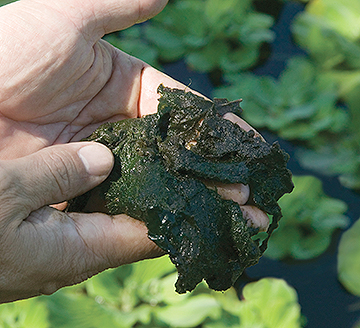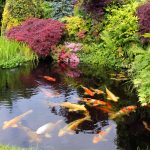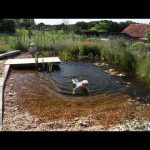Algae growth in ponds can be a common issue that pond owners face. While some algae growth is normal and even beneficial for the pond ecosystem, excessive algae can lead to various problems such as poor water quality, unpleasant odors, and unsightly green water. In order to maintain a healthy and balanced pond environment, it is important to address algae growth effectively.
Understanding Algae in Ponds
Algae are simple, plant-like organisms that thrive in water bodies with an abundant supply of nutrients and sunlight. They can quickly multiply and form dense mats on the surface of the water, affecting the overall health of the pond. Algae growth is influenced by factors such as sunlight exposure, water temperature, nutrient levels, and the presence of predators.
Common Types of Algae in Ponds
There are several types of algae that can be found in ponds, including:
- Green algae (Planktonic algae)
- String algae (Filamentous algae)
- Blue-green algae (Cyanobacteria)

Credit: www.wikihow.com
Methods to Control Algae Growth
There are various methods to control and eliminate algae growth in ponds. Some of the most effective ways include:
1. Proper Filtration
Installing a good quality pond filter can help remove excess nutrients and debris from the water, which can help prevent algae growth. Mechanical and biological filtration systems can be used to keep the water clean and clear.
2. Aeration
Oxygen plays a crucial role in maintaining a healthy pond environment. Aeration systems can help increase oxygen levels in the water, which can inhibit algae growth and promote the growth of beneficial bacteria that compete with algae for nutrients.
3. Shade The Pond
Reducing the amount of sunlight that reaches the pond can help control algae growth. Planting trees or installing shade sails can provide shade and help maintain a balanced ecosystem in the pond.
4. Manual Removal
Regularly removing algae manually using a pond net or rake can help prevent the overgrowth of algae. This physical removal method can be effective in controlling algae populations, especially string algae.
5. Algaecides
Algaecides are chemical treatments that can be used to kill algae in ponds. It is important to choose an algaecide that is safe for fish and other aquatic life in the pond. Follow the instructions carefully when using algaecides to avoid harming the pond ecosystem.
6. Beneficial Bacteria
Introducing beneficial bacteria into the pond can help break down organic matter and nutrients that algae feed on. These bacteria can outcompete algae for resources, leading to a reduction in algae growth over time.
Safe and Natural Ways to Kill Algae
For pond owners who prefer natural and eco-friendly solutions, there are safe and effective ways to control algae growth without the use of chemicals:
1. Barley Straw
Barley straw is a natural algae inhibitor that can help prevent algae growth in ponds. When placed in the water, barley straw releases compounds that inhibit the growth of algae, keeping the pond water clear and clean.
2. Pond Dye
Using pond dye can help reduce sunlight penetration into the water, limiting the growth of algae. Pond dyes come in various colors and are safe for fish and plants in the pond.
3. Floating Plants
Adding floating plants such as water lilies or water lettuce can provide shade and competition for nutrients, helping to control algae growth naturally. These plants can also add beauty to the pond environment.
4. Manual Aeration
Using a pond aerator or fountain can help circulate the water and increase oxygen levels, which can inhibit algae growth. Aeration also helps prevent stagnant water conditions that favor algae growth.

Credit: www.tetra-fish.com
Preventing Algae Growth in Ponds
While controlling existing algae growth is important, preventing future algae blooms is equally crucial. Some preventive measures include:
1. Regular Maintenance
Performing regular maintenance tasks such as cleaning filters, removing debris, and trimming plants can help prevent the buildup of nutrients that fuel algae growth.
2. Proper Feeding Practices
Avoid overfeeding fish in the pond, as uneaten food can contribute to nutrient levels in the water, promoting algae growth. Feed fish in moderation to maintain a balanced ecosystem.
3. Balance The Ecosystem
Introducing a variety of aquatic plants and beneficial bacteria can help establish a balanced ecosystem in the pond. A diverse ecosystem can help naturally control algae growth and promote water clarity.
4. Monitor Water Quality
Regularly test the water quality in the pond to ensure that key parameters such as pH, ammonia levels, and oxygen levels are within the optimal range for aquatic life. Proper water quality can help prevent algae outbreaks.
Conclusion
Algae growth in ponds can be managed effectively through a combination of preventive measures, natural solutions, and targeted treatments. By understanding the factors that contribute to algae growth and implementing appropriate control methods, pond owners can maintain a healthy and thriving aquatic environment for fish, plants, and other pond inhabitants.




